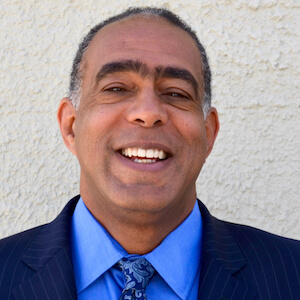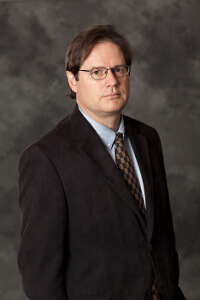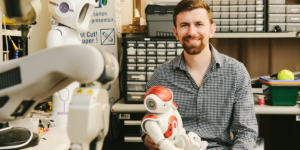
Skid Row has up to 10,000 homeless people, making it one of the most concentrated homeless populations in the United States. (Photo/iStock)
A wiry, shirtless man talking to himself strides angrily across a dusty street. A woman with matted hair and dirty, torn clothes laughs uncontrollably as she sits next to a tent filled with her belongings and garbage. The stench of urine and human excrement overpowers.
This is Los Angeles’s Skid Row, a forlorn place of broken dreams, desperation and dire poverty. In a recent article, the Los Angeles Times described the area as overwhelmed with “rats, trash and typhus.” The roughly 54 square blocks east of Main Street, South of Third Street, west of Alameda Street and north of Seventh Street has up to 10,000 homeless people, making it one of the most concentrated homeless populations in the United States.
The Weingart Center Association at 566 San Pedro Street, a provider of comprehensive homeless services, rises amid the squalor like a beacon of light. For nearly 35 years, Weingart has helped tens of thousands of lost souls find full-time jobs, secure permanent housing, overcome drug addiction and stabilize their lives.
Over the decades, Weingart has partnered with myriad governmental and nonprofit agencies, ranging from the United Way to the Los Angeles Homeless Services Authority to Volunteers of America, to realize its mission to “empower and transform lives by delivering innovative solutions to break the cycle of homelessness.” Recently, Weingart has worked with a new collaborator: the USC Viterbi School of Engineering.
A new collaborator
In the 2018 fall semester, students in Steve Bucher’s advanced writing class for engineers, Writing 340, worked on group consulting projects for Weingart. As part of their research, they spoke to the nonprofit’s leaders to find out the center’s needs, visited the Skid Row facility, and spent untold hours online and in the library.
At the end of the semester, students produced 30-plus page reports that made recommendations on how Weingart could improve services, ranging from planting a green garden on the roof of a future center building in Skid Row to creating a multiplayer video game to engender community and calm nerves. Students also made oral presentations to impressed Weingart leaders.

Kevin Murray, Weingart Center CEO and president (Photo/Courtesy of Kevin Murray)
“The main advantage of the students’ work is to have ‘fresh eyes’ looking at various issues in our operations,” said Kevin Murray, Weingart CEO and president and former California state senator. “I was impressed with the nuance that they were able to pick up and incorporate into their ideas. I expect to implement most of the them with the continued support of Viterbi.”
In addition to its relationship with USC Viterbi students, Weingart recently hired interns from the USC Suzanne Dworak-Peck School of Social Work and hosted sociology students as part of a practicum class, he added.
Brenda Wiewel, director of USC’s Initiative to Eliminate Homelessness, said the newfound partnership between Bucher’s class and Weingart embodies the “spirit of USC contributing to the community with a whole range of skills.” Wiewel has served as a liaison between USC students and the homeless services center, a collaboration that has “facilitated a research hub at Weingart so USC students could increase their knowledge of the local homeless community and develop skills to impact the crisis.”
The USC 340 students benefited as much from the Weingart partnership as did the homeless center, said Bucher, director of the Engineering Writing Program. From a pedagogical standpoint, the final project taught students how to write a technical consulting report with its many components; how to work collaboratively with other students, including non-engineering majors; and how to give an effective oral presentation.
Engineering for social good
More than that, he added, students had the opportunity to leverage engineering for social good. “We’re citizens of Los Angeles, and homelessness is perhaps the most challenging problem of our time,” Bucher said. “I have no illusion that these reports are going to solve homelessness. But if we could improve a few lives through good ideas, then it’s worth it.”

Steve Bucher, director of USC Viterbi’s Engineering Writing Program (Photo/USC Viterbi)
In the nearly 20-year-old Writing 340 course, USC Viterbi and other students have worked with more than 100 nonprofits, ranging from local schools to programs dedicated to helping HIV/AIDS orphans in Mozambique. Such hands-on experiences, Bucher said, are unique in an engineering writing program and one of the reasons why national accreditors have singled USC Viterbi’s out for excellence.
Kayla Meyerowitz, a USC Viterbi junior majoring in industrial and systems engineering, said she found the collaboration with Weingart academically and personally enriching. Her team’s report, titled “Building Futures,” recommends a series of steps to transition center clients to full-time work. Suggestions include a mentorship program, job incentives and a database to track outcomes.
“This is the first time I’ve had the opportunity to work on a program like this, to work with real people to make their lives better,” Meyerowitz said. “I think this definitely opens my eyes and shows the realm of what engineering students can do goes beyond just coding and solving math problems.”
For Kelley Hawke, a senior music major at the Thornton School of Music, the Weingart project has made her think more seriously about ethics and social justice. Her four-member team’s report, “Creativity as a Tool for Productivity,” calls for the creation of an arts program, including an art cart, “to allow residents [in Weingart’s temporary housing units] to be creative while reaping the social and psychological benefits of art therapy.”
Tonja Boykin, Weingart’s chief operating officer, said engineers play an important role in making the world a better place. That’s why she’s so excited to continue working with USC Viterbi students.
“We’re waiting for the next group,” Boykin said. “We look forward to it.”
Published on February 8th, 2019
Last updated on May 19th, 2023













